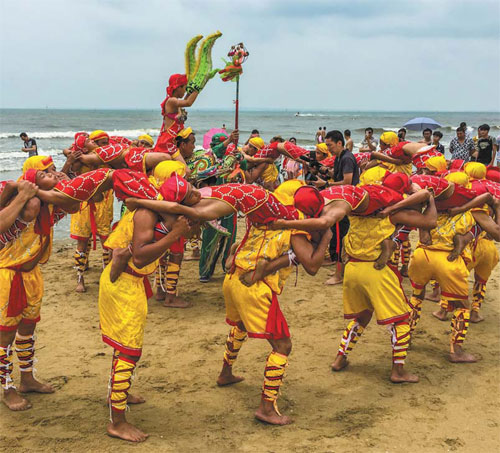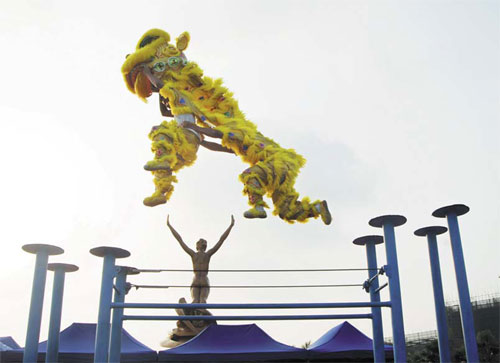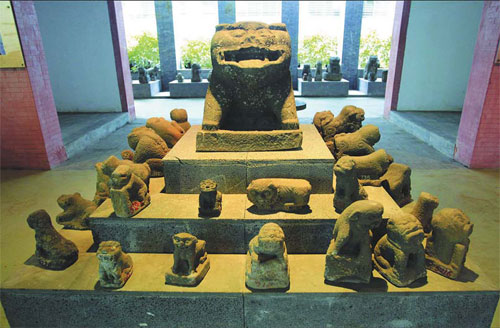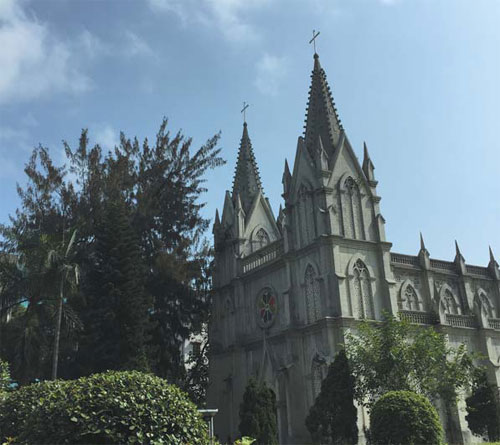City's fortunes transform over time
The map of China has often been likened to the image of a rooster. If so, Zhanjiang is the foot. A chicken foot may not be noticeable, but those who have tasted it know how delectable it can be, especially when it's enriched by layers of history, writes Raymond Zhou.
You won't be able to find the word "Zhanjiang" in most history books. The word did not exist until 1945, when, with the end of the War of Resistance Against Japanese Aggression, the city was returned to Chinese rule. For the previous 47 years (1898-1945) the bulk of it was a French colony known as Fort-Bayard.
Few in China have heard of this French name, but the Chinese name used during the time was misleading. The city was called Kouang-Tcheou-Wan, or Guangzhouwan, using the current spelling system. The problem is, it has nothing to do with Guangzhou, the provincial capital, which lies 488 kilometers to the east.
Architectural remnants of that era are still visible if you look closely. The best preserved of the French-style buildings include a Roman Catholic church with twin spires, erected in 1903, and the legation of the French consul, a beautiful yellow building constructed in 1925 that saw the shuffling of power in the turmoil of history.
Yatsen Road was the earliest in the downtown area, flanked with French loquat trees. Locals tend to call it "the loquat street". Amid the rapidly rising forests of high-rise buildings, these structures hold tenaciously to the past. Nowadays, some of the street's facade has deliberately taken on French elements to show off a sense of the exotic if not one of history.
Far and beyond
More than 2,000 years ago, fleets of ships carrying silk, ceramics and gold departed from Xuwen, the southernmost town of the peninsula. They traded along what is now known as the Maritime Silk Road, selling their goods for spices and other things from Vietnam, India and Sri Lanka. Some of the Chinese merchandise changed hands until they reached Europe.
All this was started under the reign of Emperor Wu of the Western Han Dynasty (206 BC-AD 24), a political leader with a vision beyond the border.
Although First Emperor Qin had earlier unified China, the Leizhou Peninsula was so far away from the political center of the nation that the phrase "the mountains are high and the emperor is far away" - meaning the place is too remote for the central power to reach - truly applied.
In 112 BC there was a rebellion by the king of Nanyue, a kingdom established after the collapse of the Qin Dynasty (221-206 BC) and encompassing what is now Guangdong, Guangxi and some surrounding areas.
Lu Bode, assigned the title of "Fubo General" by Emperor Wu, vanquished the rebels. He also won the hearts of locals by restoring peace and prosperity to the region. The administrative division he adopted became the base of later rule of the peninsula.
In 40 AD another local rebellion begot another "Fubo General", someone named Ma Yuan who led a fleet of 2,000 ships and an army of 20,000. After his triumph, about 2,000 of his people stayed behind, gaining a name for monkey-like dexterity. Temples bearing the name Fubo can be seen across the peninsula, a testament to their long-lasting legacy.
God of thunder
Zhanjiang people revere thunder. Thunder heralds rain, which is necessary for a good harvest. As a local saying goes, there would be something of a drought if there was no rain for three days and there would be a serious drought if rainless days lasted a week.
In a year, 90 to 100 days are marked with thunder and lightning. Hence the place was named Leizhou, as lei means thunder.
Thunder's ability to also bring disasters, when it strikes people, animals, or buildings, was said to enhance its mystic power in the minds of Leizhou's ancestors.
Unlike Thor in Nordic mythology, there are many gods of thunder on the peninsula of thunder, each in charge of a different function. There is the division of yin and yang. The yang god dispenses cool rain and welfare to the public and the land, while the yin - or female - god is known for her unlimited power and precision in punishing evil deeds. Her way of penalty is said to be quiet and invisible, not thunderous.
Despite the myriad personifications of thunder, one person gained the reputation as the "ancestor of thunder".
Chen Wenyu was born in 570 AD in an age when China proper was embroiled in war and rapid change of dynasties. According to the original myth, a hunter with a nine-eared dog and a dozen villagers went on a hunting trip. The dog dug up a giant egg, which his owner brought home. The next day, lightning hit the egg and broke it in two. Out crawled a baby boy, each of his palms imprinted with the words lei and zhou, the name that has been associated with Zhanjiang for most of recorded history.
Chen grew up with both intelligence and physical prowess. In his adult years, he resisted the temptation to go into officialdom. Only after his father died and the Tang Dynasty (AD 618-907) stabilized did he agree to be the prefectural governor. The year was 631 AD and he was 61 years old.
Chen turned out to a great leader, caring for the people and giving his utmost to raise their living standards. When he died eight years later, there was such an outpouring of public grief that he was immortalized as a personification of thunder. He was also the first political leader of eminence who came from a local tribe.
In ancient China, the axis of power and culture was along the Yellow River. The further south one went, the more it would be regarded as a place of "southern barbarianism". The royal court would relegate officials who had fallen from grace to a remote place like Leizhou, where not only the inhabitants were viewed as less sophisticated, but even the wind and water were supposed to be poisonous.
Among these disgraced officials were some of China's greatest men of letters and words, such as Su Shi (1037-1101) and Tang Xianzu (1550-1616). It was a blessing in disguise, at least for Leizhou, which showered them with hospitality and is now home to a wealth of anecdotes and verses left by these literary icons.
In the past century, visiting dignitaries have also left their imprint. Some of them came up with descriptions of Zhanjiang that not only captured their own impressions but also distilled the essence of the place. When Deng Xiaoping visited in 1960, the then vice-premier was so impressed by its charms that he compared it to Qingdao, another coastal city that is a better-known tourist destination. Hence came the phrase "Qingdao in the north and Zhanjiang in the south".
In the same year, Premier Zhou Enlai flew down to Zhanjiang. The statesman, who had lived in France for five years in the early 1920s, noticed traces of French influence and so dubbed the city "Little Paris".
Down the centuries, Zhanjiang, or Leizhou Peninsula, has been a place of cultural confluence, with a mix of many indigenous tribes and their customs cross-pollinated with those of settlers from northern China and later from Fujian province. The major difference from modern mobility is, the early settlers might have moved there against their will, but nowadays people go there because they are attracted by the city's many charms, both natural and cultural.
|
A ritualistic dragon dance is held at one of the beaches in Zhanjiang, reflecting the local tradition that has been passed down through many centuries. Zhang Xiao / China Daily |
|
The local variety of lion dance in Suixi county, Zhanjiang, was included in the national list of intangible cultural heritage in 2006. Provided to China Daily |
|
Stone dogs were regarded as totems by ancient people in Leizhou Peninsula. Currently, there are thousands of stone dogs in Leizhou scattered across villages or collected by museums. Zou Zhongpin / China Daily |
|
The Roman Catholic Church, built in 1903, is a historic reminder that the the city served as a concession to the French for several decades. Zhang Xiao / China Daily |
(China Daily 07/13/2015 page8)


















